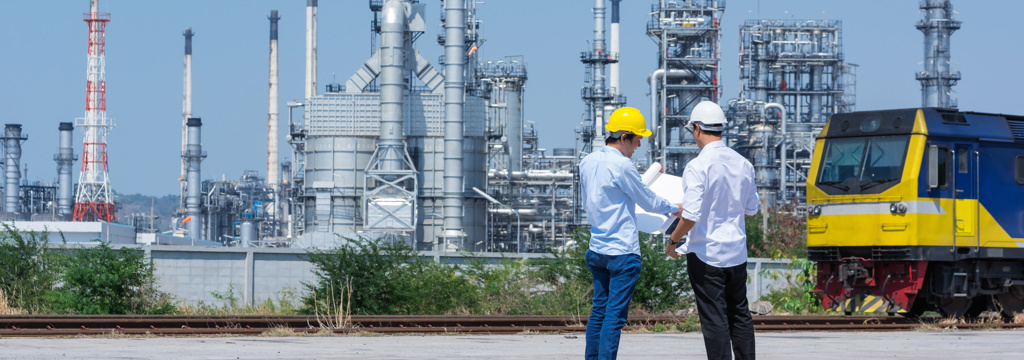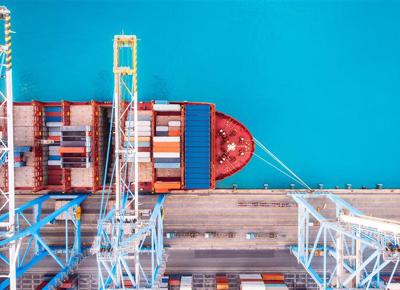People Involvement in Control of Work

The Control of Work involves many different roles in carrying out all the elements that are required to keep jobs safe. For example, faulty and vulnerably performing pieces of equipment must be identified. Isolations need to be put in place to remove energy from systems before equipment can be handed over to be worked on, the area prepared, and the repairs must be made.
All these activities must be adequately resourced, and enough time allocated for them to be carried out.
Therefore, there are a chain of events that need to be put in place in order that any job can be completed involving many personal interfaces. For this to be done safely, one vital element of this chain needs to be in full working order. People. And what’s more, people with the right behaviours.
What do we mean by behaviours?
There has been much research carried out into the role of behaviour in the prevention and/or cause of accidents. The research has pointed out that it is perhaps unsafe behaviours that are one of the biggest causes.
Examples of unsafe behaviours can include taking shortcuts, being overconfident, ignoring risk management procedures, distractions, an untidy workplace, failure to plan and assess the level of risk……. All of these could lead to an accident or an incident. It is not my intention to discuss behavioural issues at any length other than to say that they are of course very important.
It is my intention however to examine the major influence on people’s behaviours - and that is culture. All behaviours, good and bad, stem from this. An organisation will never be able to exhibit the desired behaviours if the culture is wrong.
What contributes to a safe culture?
It is several things and no one thing. A safety culture is made up from several elements. In my experience, the important ones are leadership, collaboration, learning and improvement, professionalism and understanding. Notice that I only mention communication in passing because I am convinced that if the others are there, great communication will follow.
The elements that contribute to a safe culture are discussed below and it cannot be stressed enough how important the overall site culture is in providing a system for the safe control of work. It is the classic Swiss Cheese scenario where if one of these elements or roles is dysfunctional or poorly performing in any way, the whole system becomes extremely vulnerable. Conversely however, if the culture is good, then the capacity to prevent incidents at source is immense.
Leadership
John Quincy Adams said, "If your actions inspire others to dream more, learn more, do more and become more, you are a leader." One thing I will say is that you are very lucky if you manage to get the right culture, unless you demonstrate it, walk the walk, and reinforce it at every opportunity.
Of course, leaders will be required to set the scene, establish the rules, and put in place the measurements for what they want. But for setting the right culture, unless you commit yourself to this exemplary model, it won’t happen.
A major tool in this will be communication. And a major feature in this will be reinforcement of not just the good things you do but how they have contributed. For instance, reporting the numbers of hours since your last LTA is a good thing.
Communicating how that was achieved e.g., how you reduced near misses, how and why those near misses didn’t result in incident is even better.
Collaborative approach with a shared vision
In my opinion, one of the most effective cultural aspects to develop, is the creation of a collaborative manner of work so all parties associated with the safe control of work can contribute effectively. I have worked on many sites and over almost 40 years, I have seen many site structures and a multitude of different departments.
During that time, I have witnessed on many occasions, situations where it is obvious that work processes are somewhat dysfunctional. We have all witnessed the apparently opposed aims of the Operations department who want to keep the plant going at all costs and Maintenance who would rather not see it run at all. In extreme cases, there can be an almost total breakdown and it is apparent that the purpose of each department would seem to be to make war on all other departments.
This attitude becomes very evident when presenting personnel with an all-encompassing system such as RAP – which butts up against every control of work issue there is. Many of these ‘issues’ would seem to be under the ownership of one department or another and in no way are they prepared to allow anyone else’s input.
Part of the departmental role therefore is protectionism, leading to deliberate withholding of information from others. I would posit that it is almost impossible for any individual to demonstrate consistent collaborative behaviours under such circumstances.
Example 1 – when it goes wrong
I was once at a site where we were presenting at a long table seating about 20 people. It did not take me long to realise that these twenty were divided into two very disparate groups of 10, Maintenance and Operations. In fact, it took me two comments.
The first was thanking them for the invitation, the second was ‘This is RAP, it stands for the risk assessment process’.
This immediately prompted a question from one side. ‘Well, who does that then?’ From the other, ‘Well not you for starters!’. And back, ‘Well we’ll all be in a pretty sorry state if you do it.’
I don’t think I said any more during the presentation, apart from ‘Thank you very much, goodbye’ after about 45 minutes.
Up until then, it was non-stop abuse from one side to another. I don’t think even RAP would have contributed to keeping them safe. I didn’t pursue the business.
Example 2 – when it goes right
Take for instance a site we implemented RAP on in Europe. The site had one manager who looked after both Maintenance (planners, contractors plus their own staff) and Operations.
We were able to put in a system where the Contractors were able to take part in the job definition and risk assessment (see RAP Insights # 4 – ‘All can contribute’), the planners and the operators broke down complex jobs into controllable, permittable tasks and the site maintenance staff were able to input their control over the interaction potential of any on-going work.
It was great to witness, with an almost flawless alignment of all the necessary steps between identification of a job being required through to it being signed off.
Learning and Improving
We often hear about Learning in organisations, and I feel that this is so important. Control of Work systems and processes must be established that have this learning capability built in as part of the process. Of course, learning is nothing without improvement.
There is no point in just collating indices and figures about your safety performance if you don’t put these to use to find out where improvements can be made – and make them. Your systems should therefore be built with the capacity for change and improvement right at the heart.
An important point here is that if people can see that the recommendations, they make for how a process might be improved are actually adopted, then that gives them a vital attribute. Ownership.
It goes without saying that if people feel that they own the systems by which they work then they are far more likely to abide by them. If they can further see that they can contribute to the improvement of those systems, then compliance (even in an ever-changing environment) will become routine.
Understanding
Many people have said a no-blame culture is key to ensuring that all employees feel free to discuss root causes of incidents without fear of retribution. However, I think an understanding culture is a better description of what is required.
No blame, although producing openness, implies that nobody will ever be at fault from anything they do, however bad it is. It is sad to say that this cannot always be the case. Sometimes, people are at fault.
An understanding organisation will ensure that any accident or incident will be looked at and every means will be used to try and explain why it occurred. But if the review shows that despite full training, great communication and repeated reinforcement, there actually is a person at fault, say by deliberately and repeatedly ignoring procedure, then that person should be held culpable.
Note also that understanding implies a two-way process, and this is important. If an organisation takes the time and effort to ensure people have a clear idea of their role (including the limitations within it) and they understand what outputs they are expected to provide, then this will go a long way to establishing those correct behaviours.
Professionalism
Although it plays a significant part, professionalism means more than belonging to a qualifying body. This is obviously part and membership will verify and validate someone’s training, competence, and experience. But I think there are two more very important elements, attitude, and judgement.
Of course, qualifications and skills are very necessary, but it is the way you use them which is most important. It is professionals who are going to deliver many of the tools required for people to help keep themselves safe, from risk assessment methodologies to assess risks to relief valve design, from writing emergency procedures to PPE specification.
It is their judgement that will eventually decide what is to be done in any given situation. I would assert however that this isn’t quite enough. They must have an attitude that helps them to ensure that the decisions they make aren’t just delivered but that they make sense to others and that they are readily adoptable by them. ‘I told them what they should do’ just doesn’t cut it.
And of course, all of us regardless of our qualifications, level of authority and experience have a responsibility to conduct ourselves in a ‘professional’ manner. It is in everyone’s best interests that we can carry out our jobs safe in the knowledge that all those involved in the Control of Work have carried out their role in this way to ensure the health and safety of the workforce.
Putting it all together
Any organisation which has managed to incorporate all these factors into its culture, will benefit massively. I don’t imagine that a perfect culture exists, but I have come across some plants where these attributes are amply demonstrated.
One plant we implemented RAP on in Holland comes to mind. Here, the collaborative nature of the organisation is fully visible. The Planners and the Operators actively confer on how jobs will be set up on the maintenance management system and how the resultant tasks will be permitted to identify the hazards and control the risks. They also actively involve the contractors during all stages of permit preparation, allowing them in to input activity details that can influence the permit content.
The organisation had a great capacity to learn too and to act from the results of that learning. One great example was by analysis of the way RAP was used. In RAP, it is possible to record every mouse click that the user makes.
The company used these activities to map out any blockages in the task definition – isolation – permit process. They were then able to put systems in place that allowed them to streamline the process even further.
Their understanding nature was demonstrated by the involvement of all parties in reviewing any incidents. Everybody in the organisation worked very hard to ensure that any unsafe behaviours were brought out into the open and every effort made to rectify them.
These attributes obviously affected all the functions of the company. As far as Control of Work was concerned though, the result is a marvellously well-aligned and efficient workflow that dramatically reduced waiting times caused by poor specification and after just 9 months of using RAP, had eliminated the maintenance backlog.
In conclusion
15 years ago, you couldn’t go into any company without seeing a poster saying, ‘People are our greatest asset’. Sadly, often, putting up the poster was as far as the company went in backing up that assertion. You don’t tend to see the posters so much now, but I would maintain that the message is still as true today. What’s more, is that if you can provide and nurture the right culture, then those greatest assets will bring great rewards.
Related Articles
 Best Practice Control of Work
Best Practice Control of Work
We would like to share this experience with you in a series of articles with the common goal of keeping our workplaces safe.Welcome to this series of ...
 Risk Assessing for Maintenance Work – Some Thoughts
Risk Assessing for Maintenance Work – Some Thoughts
What is Risk Assessment? Risk Assessment means many things to many people. The importance of risk assessments to identify hazards and the levels of ri...
 Why does Control of Work matter? 4 key reasons to go digital
Why does Control of Work matter? 4 key reasons to go digital
There are many reasons why safe Control of Work (CoW) really matters, particularly in industries that may not be as obviously dangerous as high hazard...